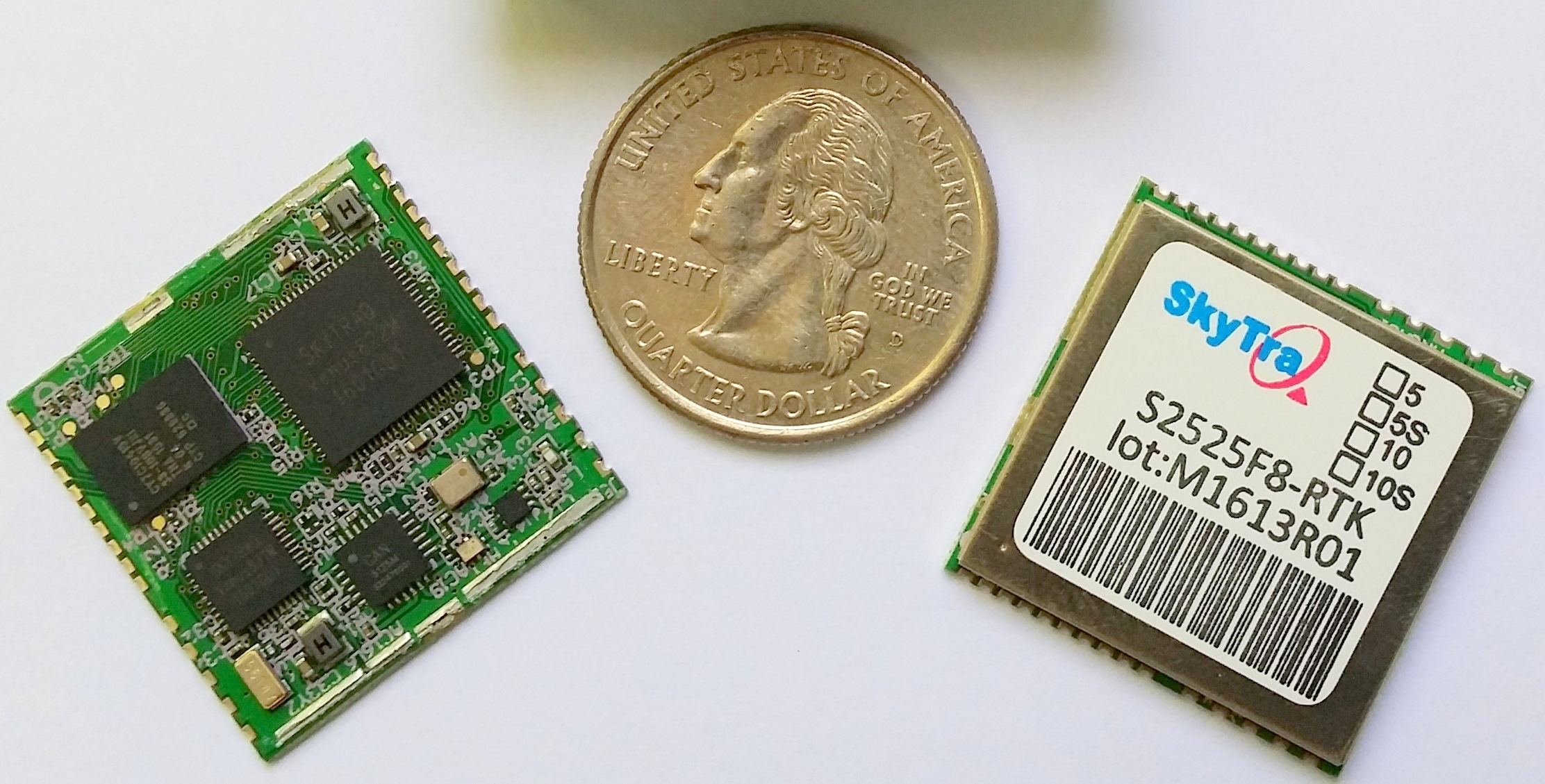
SkyTraq Technology Inc., a leading provider of GNSS positioning solutions, launches PX1105S, a state-of-the-art GNSS receiver module offering dual-frequency L1/L5 signal reception. This multi-constellation GNSS receiver delivers sub-meter positioning accuracy, making it ideal for applications requiring enhanced precision over traditional GNSS receivers.
Read More
SkyTraq Technology Inc., a leading fabless provider of GNSS positioning solutions, announces the launch of the PX1172RD, a high-precision GNSS receiver with an integrated Inertial Measurement Unit (IMU). The PX1172RD leverages advanced Real-Time Kinematic (RTK) technology combined with inertial navigation to deliver robust, decimeter-level positioning accuracy, tailored to meet the growing demands of autonomous robotic precision-guidance applications.
Read More
SkyTraq Technology Inc., a leading fabless GNSS positioning technology company, sets a new benchmark for dead-reckoning solution suitable for both automotive pre-installation and aftermarket. The highly-robust PX1120D module integrates a 6-axis inertial measurement unit (IMU) and a concurrent quad-GNSS chipset forming sensor fusion solution maximizing position accuracy even in challenging environments.
Read More
SkyTraq announced today a 17mm x 22mm size PX1172RH surface mount multi-band multi-GNSS receiver module for RTK positioning and heading applications. With dual antenna input, the receiver delivers fractional-degree heading & pitch or heading & roll angles on top of centimeter-level positioning.
Read More
SkyTraq announced today a 12mm x 16mm size PX1122R multi-band RTK receiver for centimeter-level accuracy positioning applications. It works with all the four global navigation satellite systems using GPS L1/L2C, Galileo E1/E5b, GLONASS L1/L2, and Beidou B1I/B2I signals concurrently to maximize positioning availability even in difficult urban environments. Based on single-chip SoC design, PX1122R is currently the smallest size, lowest power, multi-band multi-GNSS RTK receiver module on the market.
Read More
SkyTraq Technology Inc. introduces S1216DR8P GPS/GNSS dead-reckoning receiver, integrating 3-axis gyroscope, 3-axis accelerometer, and barometric pressure sensor with GNSS receiver. S1216DR8P provides 100% coverage; ideal for vehicle navigation, tracking, and ADAS applications requiring highest performance, reliability, and uninterrupted positioning.
Read More
SkyTraq Technology Inc., a leading fabless GNSS positioning technology company, introduces S1216F8-GI2, a NavIC + GPS/GAGAN receiver module for the emerging Indian market.
Read More
SkyTraq Technology Inc., a leading fabless GNSS positioning technology company, introduces S1722DR8 GNSS dead-reckoning receiver, integrating 3-axis gyroscope/accelerometer and barometric pressure sensor with GNSS receiver.
Read More
SkyTraq Technology Inc., a fabless GNSS positioning technology company, introduces S2525F8-RTK, a low-cost, low-power, single frequency RTK receiver for applications requiring centimeter-level accuracy positioning.
S2525F8-RTK is a multi-constellation GNSS RTK receiver that can use 12 GPS, 8 SBAS, 6 BDS, and 1 QZSS signal. In situations where RTK fix is not possible, a Float RTK mode can be used for decimeter-level accuracy positioning. A moving-base mode is also supported for precise heading GPS compass application. Its 25mm x 25mm form factor, 3 gram weight, and 250mW power consumption makes it ideal for any outdoor mobile applications requiring high precision RTK positioning.
Read More
SkyTraq Technology Inc., a fabless GNSS positioning technology company, introduces S2525F8-BD-RTK, a cost effective, low power, small size, single frequency RTK receiver for unmanned aerial systems and mobile platforms requiring centimeter-level position accuracy.
S2525F8-BD-RTK is a multi-constellation GNSS RTK receiver that supports GPS, BDS, QZSS, and SBAS; simultaneously tracks up to 28 satellites. Its 25mm x 25mm form factor, 300mW power consumption, and 3 gram weigh makes it ideal for any outdoor applications requiring high precision RTK positioning.
Read More